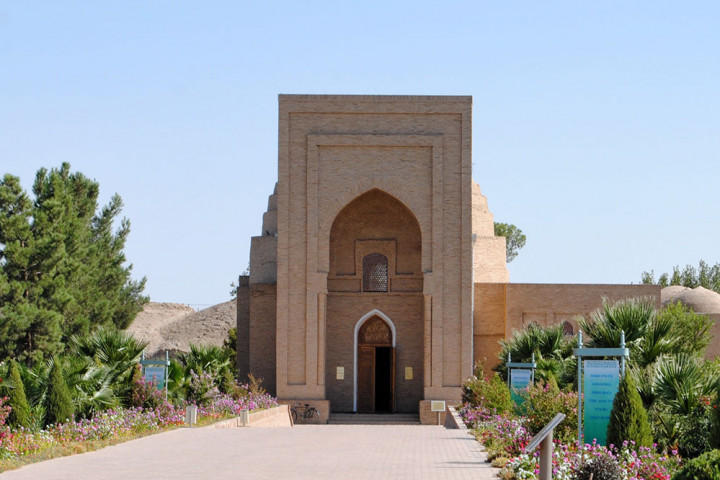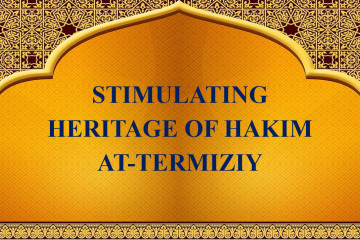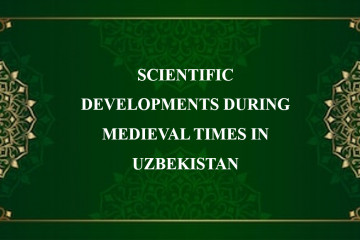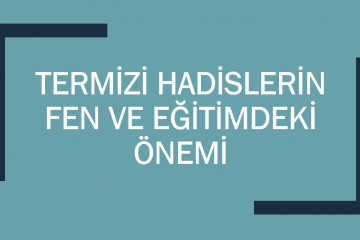
AL-HAKIM AT-TERMIZI
His full name was Abu Abdullah Muhammad ibn Ali ibn al-Hasan ibn Bashir al-Hakim at-Termizi. Information concerning his biography is presented in a number of sources written by the historians in the Middle Ages such as Tajiddin as-Subki, Al-Khatib al-Baghdadi, Ibn Hajar al-Asqalani, as-Sullami, as well as his own autobiographic book “Bad’u sha’ni Abu Abdullah” (The Beginning of the Works of Abu Abdullah). His full name is also given in the titles or in the introductions of his books like “Navadir ul-usul fi ma’rifat akhbar ar-Rasul” (Rare Methods of Receiving Information about the Messenger of Allah), “Um al-Avliya” (The Science of Saints), “Khatm, al-Avliya” (The Seal of Saints) and “Nazair al-Qur’an” (Lessons of Qur’an).
As to his date of birth, we also come across different information in different sources. It is usual in the written sources of the middle Ages to show only the date of death of a person. A famous historian from Egypt Abdulfattah Abdullah Baraka, who studied the life and activities of al-Hakim at-Termizi, wrote that he was born in 205/820 in Termez and lived a long life and died in 320/932 at the age of 112. Thus, we can conclude that further investigations of al-Hakim at-Termizi’s life and career will give possibilities for defining the data about his date and place of birth. His mausoleum erected near Termez on the banks of the river Amudarya.
People surrounding him began to understand his ideas and viewpoints. The books created by him became unique and valuable contribution to the treasure of science. The authors who wrote about at-Termizi’s career mention different data about the number of books written by him. Some of the authors write that al-Hakim at-Termizi left more than four hundred books whereas the others say that this data is about eighty or forty. According to the information presented by an Egyptian historian Sheikh Abdulfattah Abdullah Baraka, al-Hakim at-Termizi created more than four hundred books out of which only around sixty have reached us. The most important thing is in the fact that the books, which have reached us, form the most important part of his scientific legacy. The most important one among them is the book “Navadir al-usul fi ma’rifat akhbar Rasul” (About the Methods of Knowing I he Information Given by Prophet Muhammad (saas)). This book is also famous with the title “Salvat al-arifiyn va bustan al-muvahhadiyn”. Published in Kustantiyniya in 1294/1876, it contains 291 Hadiths chosen by al-Hakim at-Termizi where he reviewed his points of view in the order of the religious trends perfectly well. It is noteworthy that a copy of this book being preserved in the library of the Headquarters of the Office of Muslims in Uzbekistan.
The works written by al-Hakim at-Termizi can classified into different groups. The first group constitutes the lectures and textbooks delivered for his students and followers, another group of his writings includes his monographic researches and answers to the questions given to him during debates and discussions, or descriptions of difficult problems discussed among scholars of his time, as well as his letters to his friends, colleagues and followers. Thus, we can suppose that materials of this group had developed during his whole life systematically.
This fact gives us another notion — al-Hakim at-Termizi had his own way of treatment of the events and social surroundings of his time so that he could form his own way of vision of the social life. Some other specialists who studied al-Hakim at-Termizi’s creative activity support this idea. The approach to reality chosen by al-Hakim at-Termizi spread even far away regions of his time. Some Arabic scholars called his teachings as “madhab”[1].
[1] Madhab — a branch in religion.
Farrukh Saydullaev
Scientific stuff,
Department of international relations and tourism development.
 УЗ
УЗ
 РУ
РУ
 EN
EN
 العربية
العربية






Оставить комментарий